FASHION
Designers & Brands At The 2023 Lagos Fashion Week
Published
9 months agoon
By
FAB.NG
Every year, fashion enthusiasts eagerly await the Lagos Fashion Week, which provides an opportunity to witness the latest designs from a wide range of brands and designers. Held from October 26 to October 28, 2023, the event carried on the distinguished legacy of exhibiting creativity and originality in the fashion industry.
An incredible lineup of designers and brands had the chance to showcase their collections at this event, enthralling the audience with their distinct aesthetics and creativity. With a diverse array of talents that all added to the vibrant tapestry of the fashion industry, the event was a thriving hub of the industry. This yearly event in Lagos gives designers a platform to shine in addition to celebrating fashion and expressing their artistic visions, making it a must-attend occasion for fashion experts and industry insiders.
The event featured a strong representation of African designers from Senegal, Ghana, South Africa, Cote d’Ivoire and other countries. These gifted designers gave the fashion show a rich and varied depth by showcasing their viewpoints, cultural influences, and artistic expressions. These designers’ attendance highlighted the Lagos Fashion Week‘s continental reach and importance, demonstrating how it acts as a unifying forum for African fashion brilliance. Their participation demonstrated the event’s dedication to showcasing and honouring the diverse range of creative talents across Africa, thereby establishing it as a truly inclusive and representative exhibition of the region’s fashion expertise.
Here’s a list of Designers/Brands present at the 2023Lagos Fashion Week:
1. Atafo
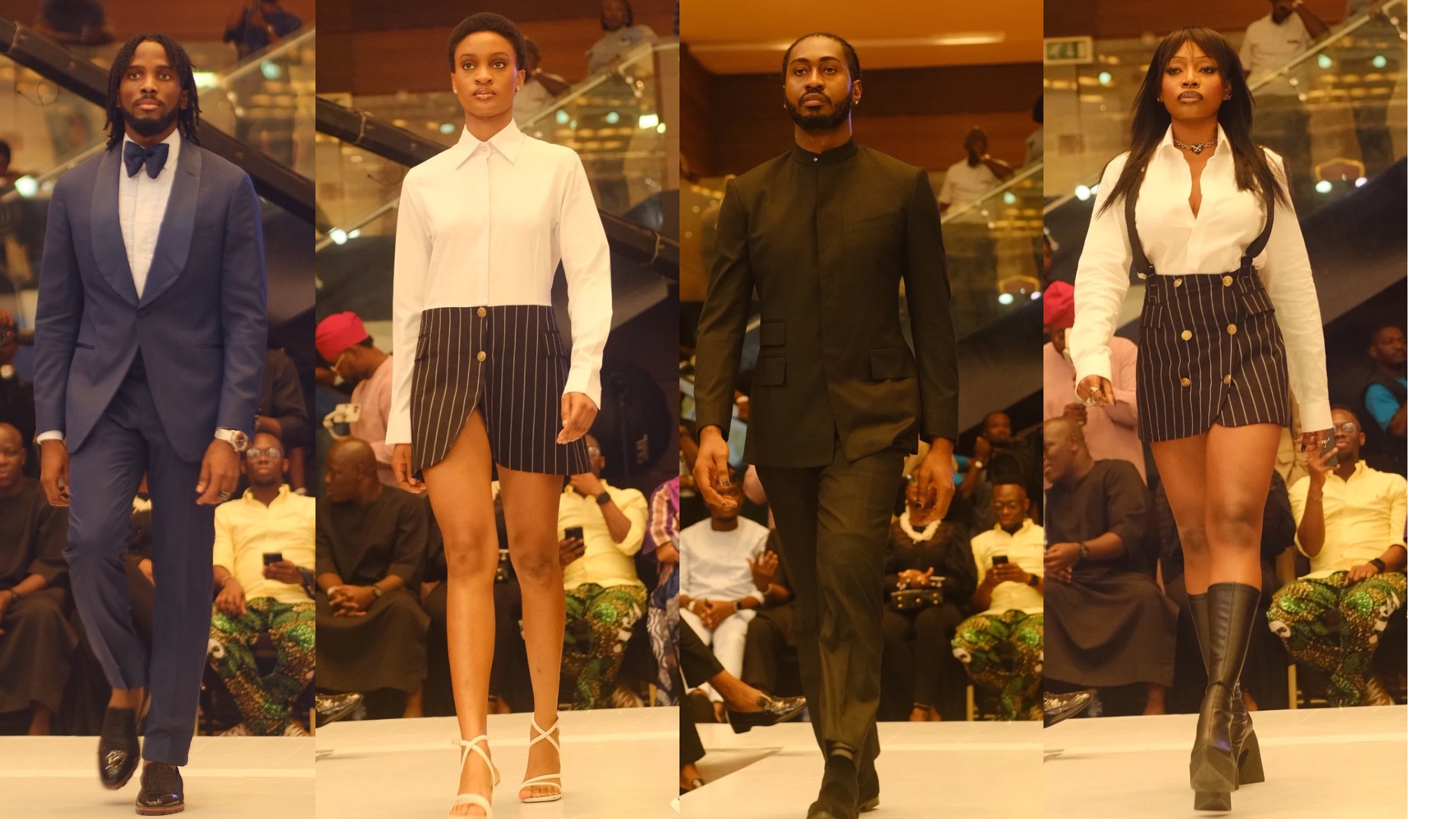
This brand was founded by Mai Atafo. The Nigerian designer unveiled his eagerly awaited Summer/Spring 2024 collection, aptly titled “Sartorial Reverie” at Lagos Fashion Week. This collection offered a broad range of looks appropriate for different life occasions, combining sophistication and modernity.
The formal silhouettes used in the men’s fashion collection were influenced by the designer’s well-known creations, such as the “shake” and “tradxedo”. These items gave traditional tailoring elements a modern twist, so guys could find well-made and fashionable additions to their wardrobes.
Regarding women, the collection showcased a fresh and increasingly feminine approach. It expertly combined traditional Nigerian influences with modern design principles. This creative process produced a collection that embraced contemporary trends while honouring the rich history of Nigerian fashion, making it an exciting addition to the fashion landscape. ‘Sartorial Reverie’ thus catered to a diverse audience, offering a harmonious blend of sophistication and cultural authenticity for fashion enthusiasts looking to make a statement at any event.
2. Rendoll
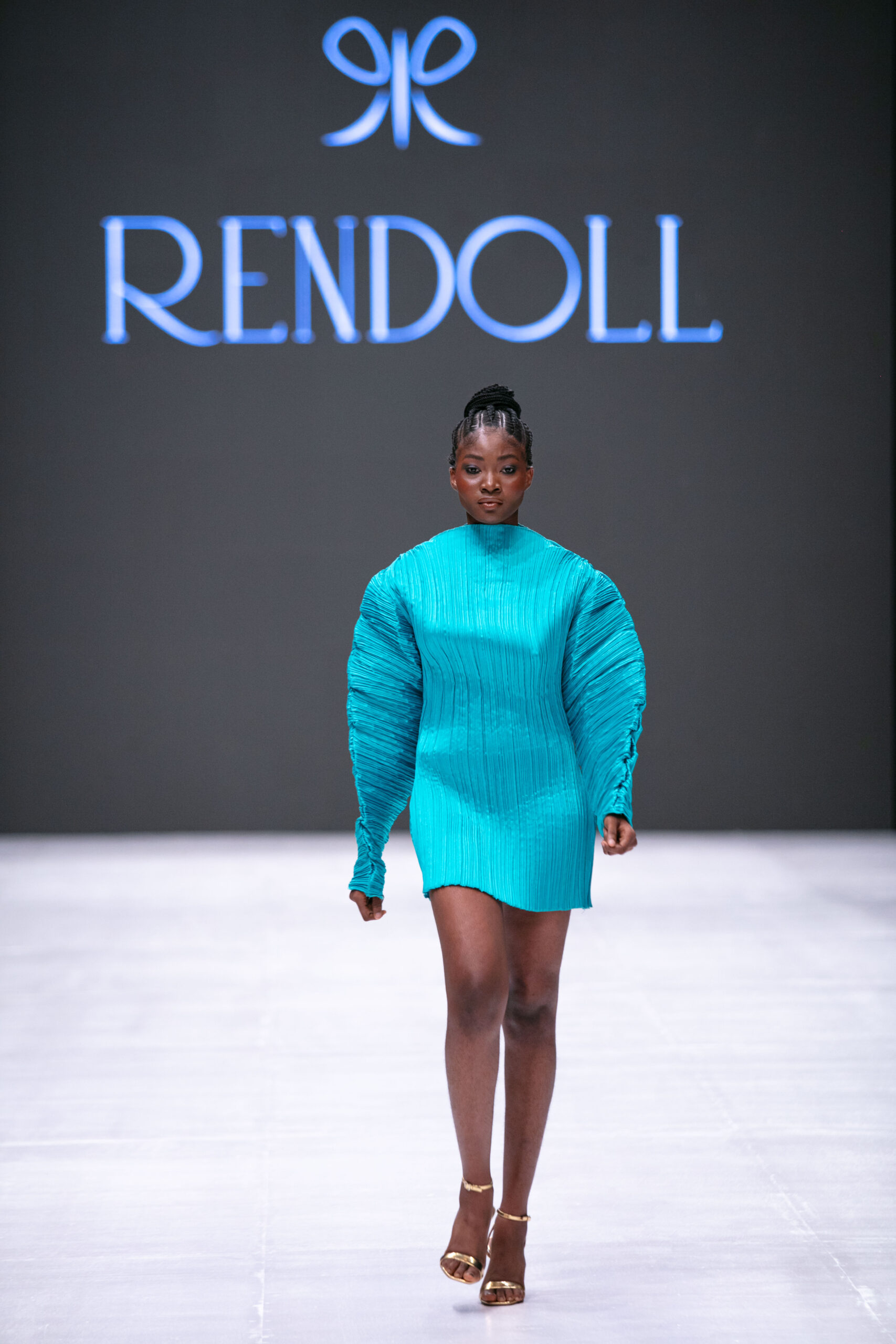
Reni Abina founded the brand, which debuted with the captivating Rendoll Spring|Summer ’24 Collection during Lagos Fashion Week. The brand’s dedication to inclusivity was demonstrated by this collection, which featured classic and adaptable pieces made to fit women of all shapes and sizes.
Rendoll, who was attending the event for the first time, put on an impressive display that featured 26 different looks totalling 40 unique pieces. This launch not only signalled a big turning point for the brand, but it also showed how committed it is to providing clothing that fits a wide spectrum of women and transcends size. Rendoll’s Spring/Summer ’24 Collection marked a significant development in the fashion industry by showcasing options that were both stylish and inclusive of a wide range of body types.
3. The LadyMaker

This is a contemporary Nigerian women’s fashion and lifestyle brand under Ifeyinwa Azubike’s creative direction. The brand’s “Indigo” Spring/Summer 2024 collection stole the show at Lagos Fashion Week 2023 edition. With the help of modern creativity, this collection presented a captivating reworking of the classic adire design.
The clothing items displayed in ‘Indigo‘ were distinguished by their skilled tailoring and elaborate cuts, exhibiting a smooth fusion of creativity and skill. This collection is a notable addition to the Nigerian fashion scene because Ifeyinwa Azubike’s vision for it emphasised the brand’s dedication to pushing the boundaries of traditional design while also reflecting a deep appreciation for heritage and culture. The Lagos Fashion Week’s ‘Indigo‘ collection emphasised the brand’s commitment to creative expression.
4. Pepper Row
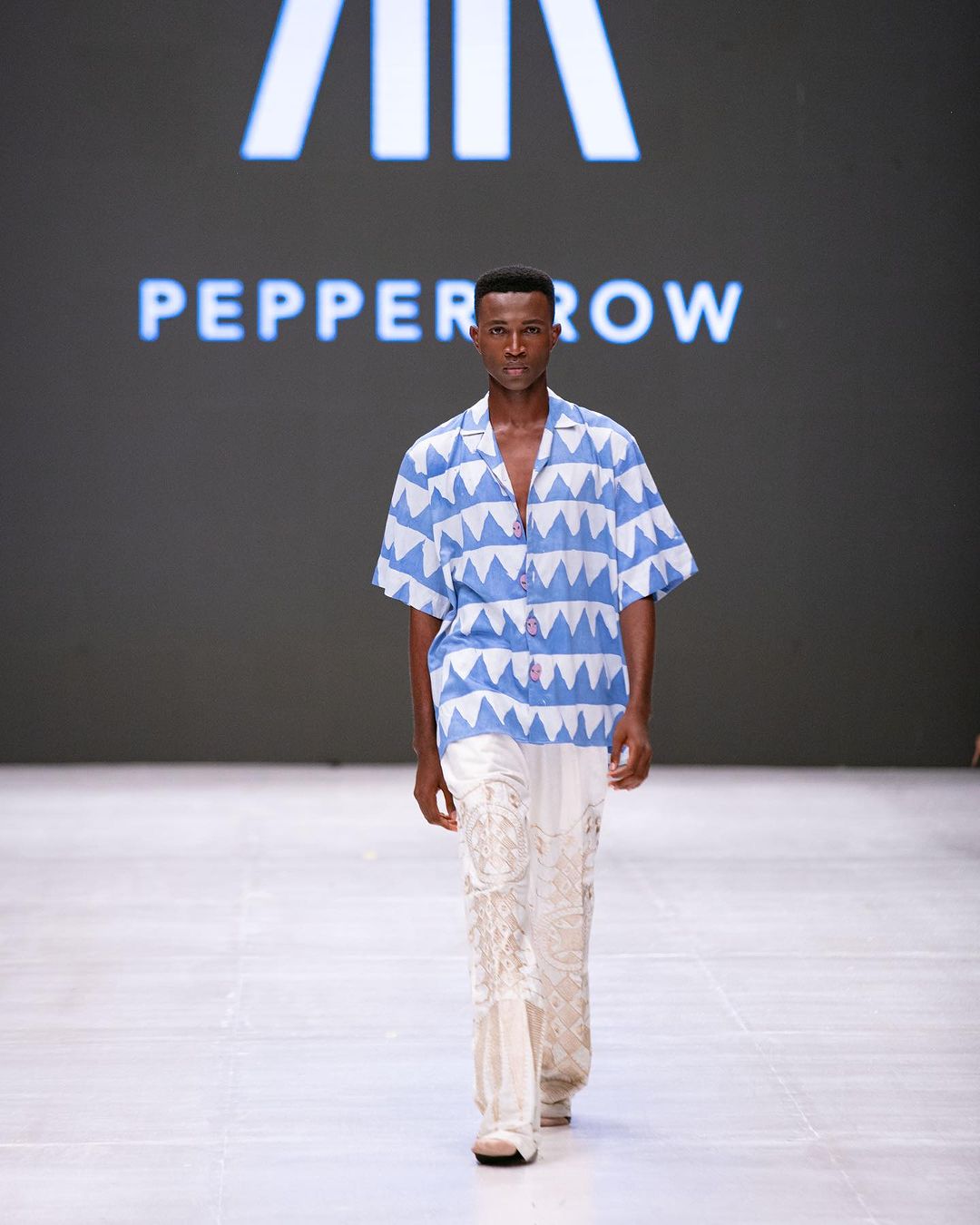
This creative luxury fashion brand was founded by Omafume Niemogha and has a strong focus on sustainability. The brand was able to showcase its Spring/Summer 2024 Collection during Fashion Week, and despite the passing of time, it persisted in embracing the fundamental elements of its unique aesthetic.
Notably, this collection included striking 3D illustrations that gave the fashion show an avant-garde and visually arresting touch. The collection honoured tradition in addition to modern design elements by utilising materials like aso oke and batik. The brand’s ability to bridge the gap between the past and the future was highlighted by this fusion of traditional fabrics with contemporary aesthetics, demonstrating its commitment to sustainability and innovation in the fashion industry.
5. Pettre Taylor
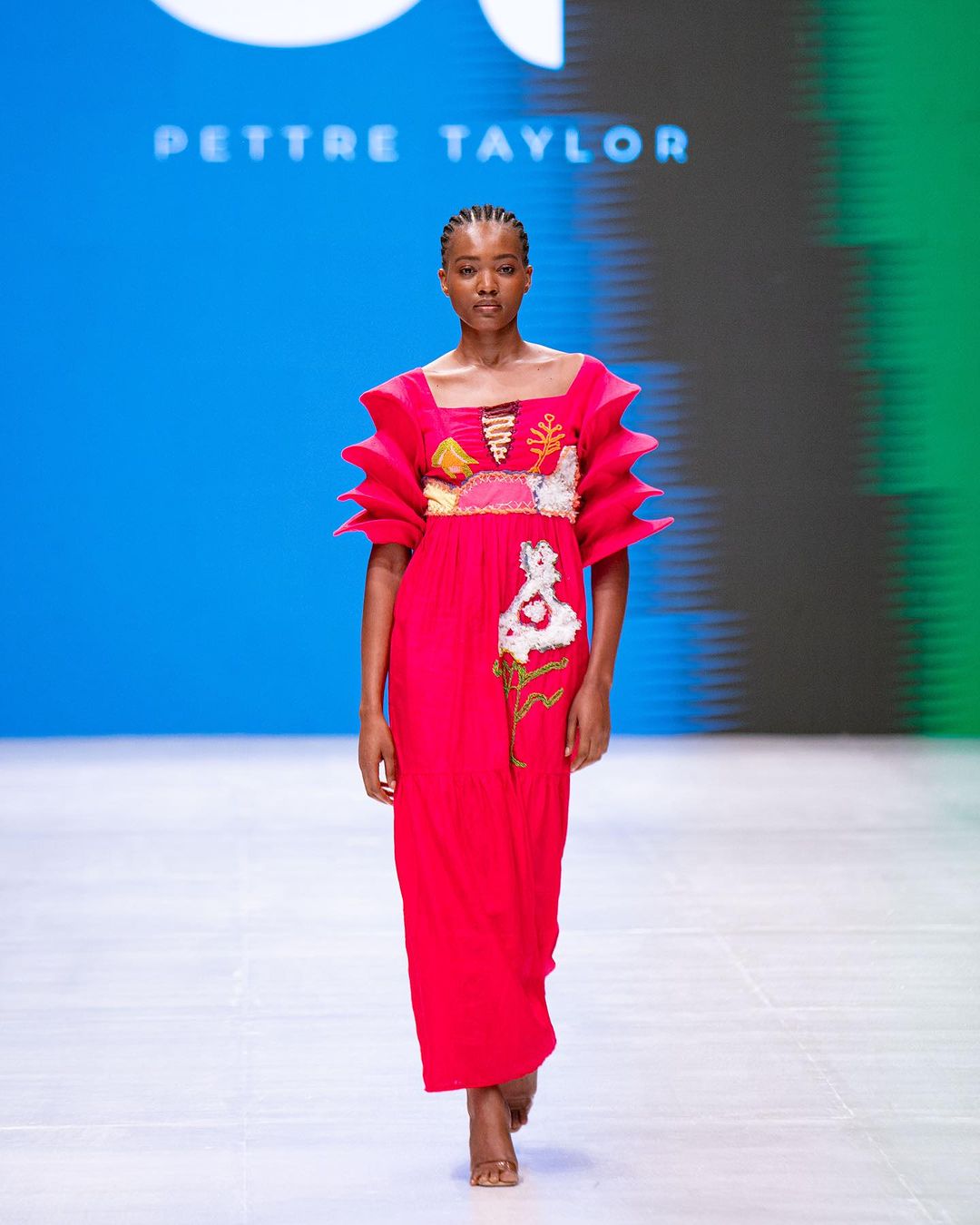
Founded by Peter Acha, this fashion brand made a big impression during fashion week in 2023 with its beautifully named ‘Let Our Differences Bloom‘ Spring/Summer 2024 Collection. This collection, which included exquisite hand embroidery made of natural fibres, celebrated the beauty of diversity. Additionally, it expertly combined patterns and handicraft methods influenced by numerous global cultures.
“Let Our Differences Bloom” was an artistic and cultural statement in addition to a fashion statement. It was a tasteful blend of artistry that celebrated the diversity of cultures and crossed boundaries. Peter Acha’s collection was a highlight of the fashion week, showcasing the brand’s commitment to using fashion to promote harmony and appreciation of the world’s diverse cultures.
Get the latest & greatest updates right away! Join our exclusive WhatsApp Channel & never miss out on exciting news again.
6. Lulla House
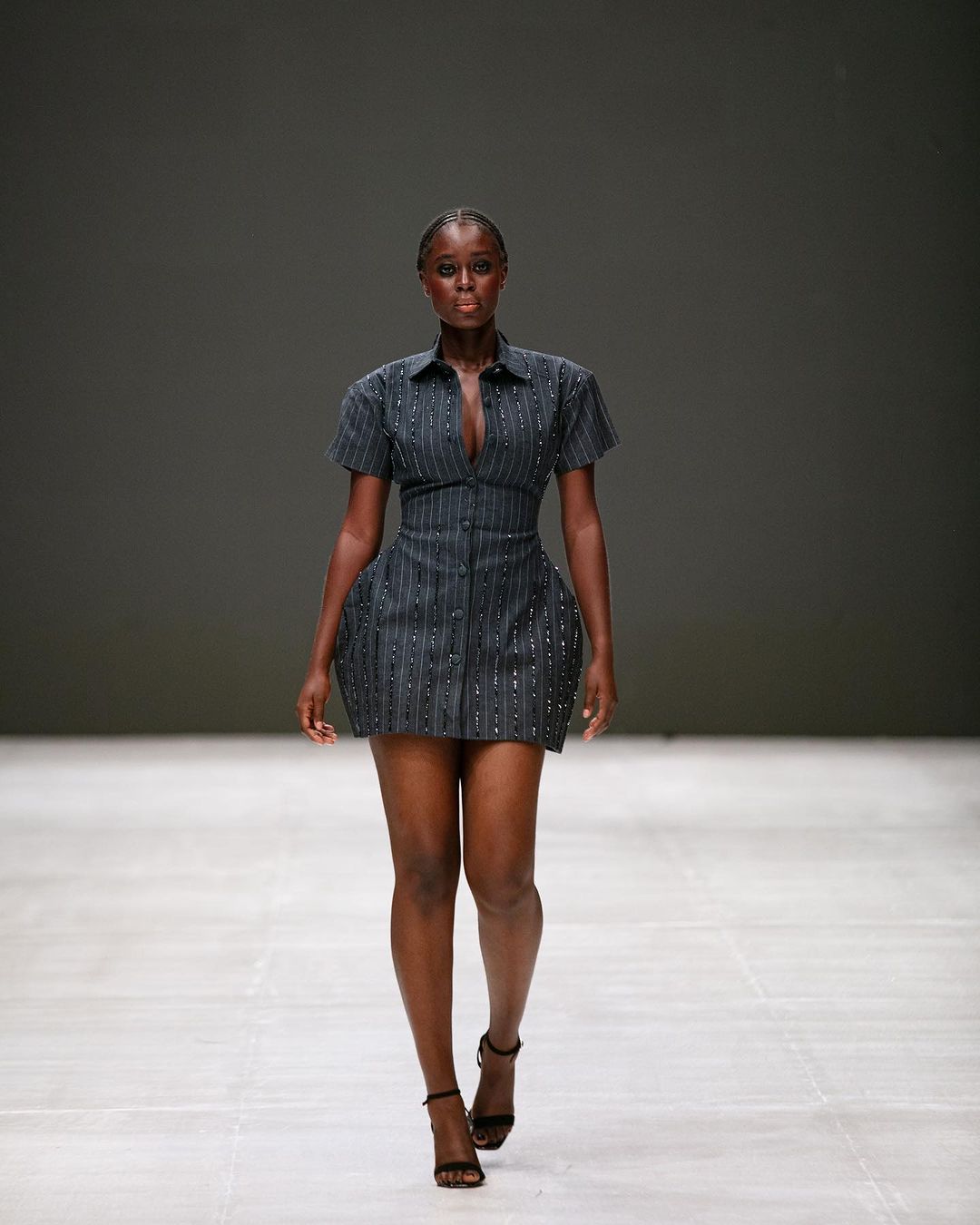
A major player in conscious and sustainable industry, Lulla House finds inspiration in the rich history, culture, and artwork of Africa. The brand debuted its Spring/Summer 2024 Collection, called “Threads of Continuity” at the prestigious Lagos Fashion Week, in a noteworthy demonstration of originality and flair.
This collection demonstrated Lulla House’s dedication to honouring African influences and conserving cultural legacy. It featured a captivating combination of materials, such as textured textiles, dynamic movements, modern silhouettes, and elaborate hand-beaded embellishments. “Threads of Continuity” told the story of the brand’s commitment to bringing the richness and vitality of African heritage into modern fashion. It was more than just a fashion show. The collection was a magnificent representation of the brand’s ability to connect the past and the present, inviting the fashion world to embark on a journey through time and culture.
7. Abigail Ajobi

The London-based designer behind this fashion brand debuted ‘ANTI-MUSE,’ the Spring/Summer 2024 collection, at the event. With a variety of modern silhouettes that effortlessly incorporated elements like tie-dye, infused prints, stylish denim ensembles, and midriff-baring designs, the collection was a striking representation of modern fashion.
“ANTI-MUSE” demonstrated the brand’s adaptability to cutting-edge design ideas and contemporary fashion trends. It offered a captivating fusion of various elements and styles, appealing to a broad audience with a penchant for chic and bold fashion choices. The collection was a standout exhibit at the event because of its bold and unique character, which emphasised the brand’s dedication to pushing the limits of contemporary design.
8. Cute Saint

This Lagos-based fashion brand progressively embraces gender-neutral designs. Star fashion editor and celebrity stylist Muftan Femi Ajose founded it. The brand’s “IGBOYA” Spring/Summer 2024 Transitional collection left a lasting impression.
The brand’s artistic vision was expertly showcased in ‘IGBOYA‘ which combined metallic and knitted fabrics to create a masterful texture-interweaving effect. The collection mostly used tones of white, black, and grey in a monochromatic colour scheme. ‘IGBOYA‘ at the Lagos Fashion Week thus emphasized the brand’s dedication to pushing the boundaries of fashion by creating unique and inclusive designs.
However, other brands present at the event included Studio Imo, Jewel Jamila, Oshobor, Cynthia Abila, Kadiju Orire, Pillz n Poizn, Geto, SVL Designs, LFJ, Elexiay, Katush, Ajabeng, Mariah Bocoum, Kente Gentlemen, Kiko Romeo, Eki Kere, Ugo Monye, Desiree Iyama, Lila Bare, FIA, Lush Hair, Kilentar, Adama Paris, Eki Silk, Nkwo, Emmy Kasbit, Ellie Kuame, Iamisigo, Maliko, Fruche, Ejiro Amos Tafiri, Orange Culture, Sisiano and Imad Eduso.
See the Photos Below.











Get the latest updates here.

You may like
-
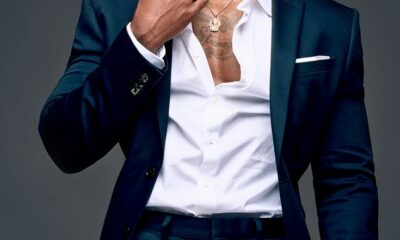

Suit Up & Stand Out: How To Wear A Head-Turning Suit In 2024
-
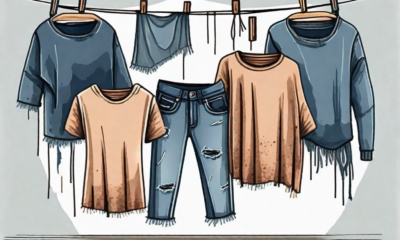

What Qualifies As Distressed Fashion?
-
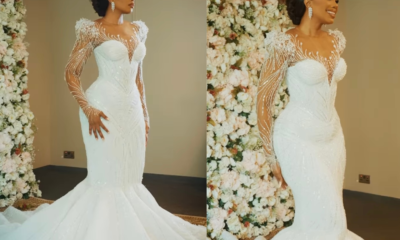

My Wedding Dress Is The Most Comfortable Dress I’ve Ever Worn – Sharon Ooja Appreciates Designer Veekee James
-
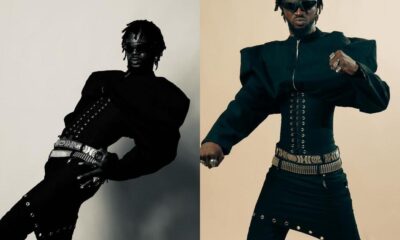

Netizens React To Black Sherif’s New Outfit
-
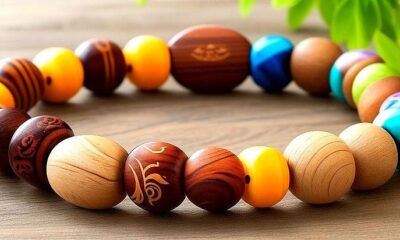

7 Bracelets Said To Repel Evil Spirits And Negative Energy
-
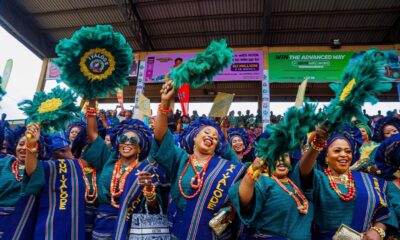

How The Ijebus Come Up With Elaborate Fashion At Ojude Oba Festival
FASHION
Suit Up & Stand Out: How To Wear A Head-Turning Suit In 2024
Published
6 days agoon
July 20, 2024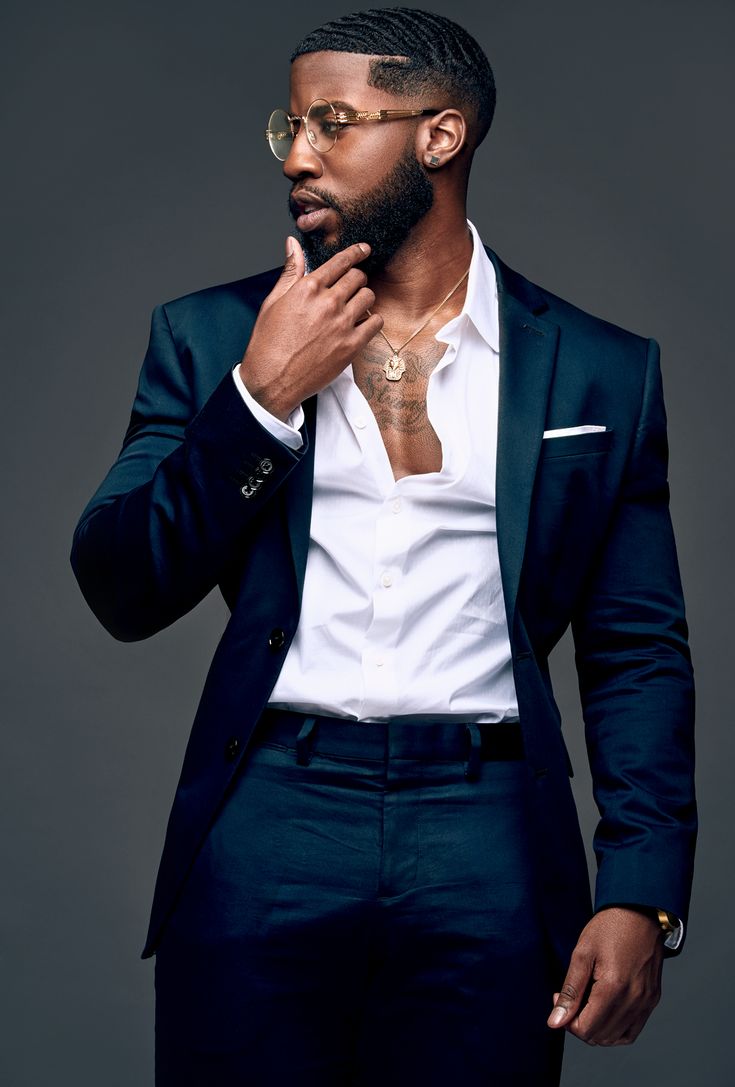
The classic suit remains a timeless symbol of sophistication and style even in 2024. But in the ever-evolving world of fashion, even the suit needs a refresh to stay on top of its game.
So, how do you wear a suit in 2024 that not only commands respect but also turns heads? Here are some key elements to consider:
1. Fit is King (and Queen)
A well-fitting suit is the cornerstone of any head-turning look. It should flatter your body type without being too baggy or constricting. Here’s a breakdown for a modern fit:
-
Jacket: The shoulders should sit comfortably without bunching or tightness. The sleeves should reach the base of your thumb with your shirt cuff showing slightly. The jacket should hug your torso without feeling restrictive, and the back should have a clean line without pulling or bunching.
-
Trousers: Gone are the days of baggy suit pants. Opt for a slimmer, tapered leg that skims your calves without clinging. The trousers should sit comfortably at your waist, and the break (the fold where the pants meet your shoes) should be minimal or nonexistent.
2. Embrace the Modern Silhouette
The classic suit gets a modern update in 2024 with a focus on clean lines and a slightly slimmer silhouette. Here’s what to keep in mind:
-
Higher armholes: Compared to traditional suits, the armholes on modern jackets sit slightly higher, creating a cleaner and more streamlined appearance.
-
Fitted chest: While still allowing for comfortable movement, the chest area of the jacket should have a more fitted look compared to looser styles of the past.
-
Lower waist: The modern suit jacket tends to have a slightly lower waistline, creating a more elongated and contemporary look.
3. Fabric is Fantastic
The fabric you choose for your suit plays a significant role in both aesthetics and comfort. Here are some popular options for 2024:
-
Lighter fabrics: As comfort takes centre stage, lighter fabrics like linen and cotton blends are gaining popularity. These are perfect for warmer weather and offer a more breathable feel.
-
Textured fabrics: For a touch of visual interest, consider textured fabrics like wool blends with a subtle texture. This adds a bit of personality without going overboard.
-
Bold colours (if you dare): While classic navy, charcoal, and black remain reliable choices, 2024 sees a rise in bolder colour options. Think rich burgundy, olive green, or even a deep teal for those who like to push boundaries.
4. Pattern Play
Patterns can add a touch of personality and visual interest to your suit. However, moderation is key in 2024. Here are some tasteful ways to incorporate patterns:
-
Subtle pinstripes: A classic and timeless choice, pinstripes add a touch of sophistication without being overly flashy.
-
Windowpane checks: For a bolder statement, a windowpane check pattern can be a great option. Choose a check with a subtle colour contrast for a more polished look.
-
Mixing patterns (for the adventurous): For those who like to experiment, mixing patterns can be a daring but stylish choice. However, ensure the patterns complement each other in terms of size, scale, and colour.
5. Shirt Savvy
The shirt you pair with your suit significantly impacts the overall look. Here are some tips for a modern and stylish shirt choice:
-
Solid colours: Solid-colour shirts are a safe and versatile option. Choose colours that complement your suit and skin tone. Light blue and white are classic choices but consider exploring other options like lavender or light pink for a unique touch.
-
Minimal patterns: If you prefer a patterned shirt, keep it subtle. Opt for small geometric patterns or micro-florals for a hint of visual interest without overwhelming the overall look.
-
Collar choice: A spread collar is a versatile choice for most suit styles. For a more formal look, a wing collar might be appropriate.
6. Accessorize with Intention
The right accessories can elevate your suit from ordinary to extraordinary. Here are some key accessories to consider:
-
Ties (optional): The tie is no longer mandatory in 2024. However, a well-chosen tie can add a touch of personality and polish to your look. Choose a tie that complements your shirt and suit colour scheme.
-
Pocket square: A pocket square adds a touch of sophistication and detail. Opt for a pocket square that complements your tie or shirt colour for a cohesive look.
-
Belts: A sleek leather belt in brown or black will complement most suit styles.
For more fashion updates, check here.
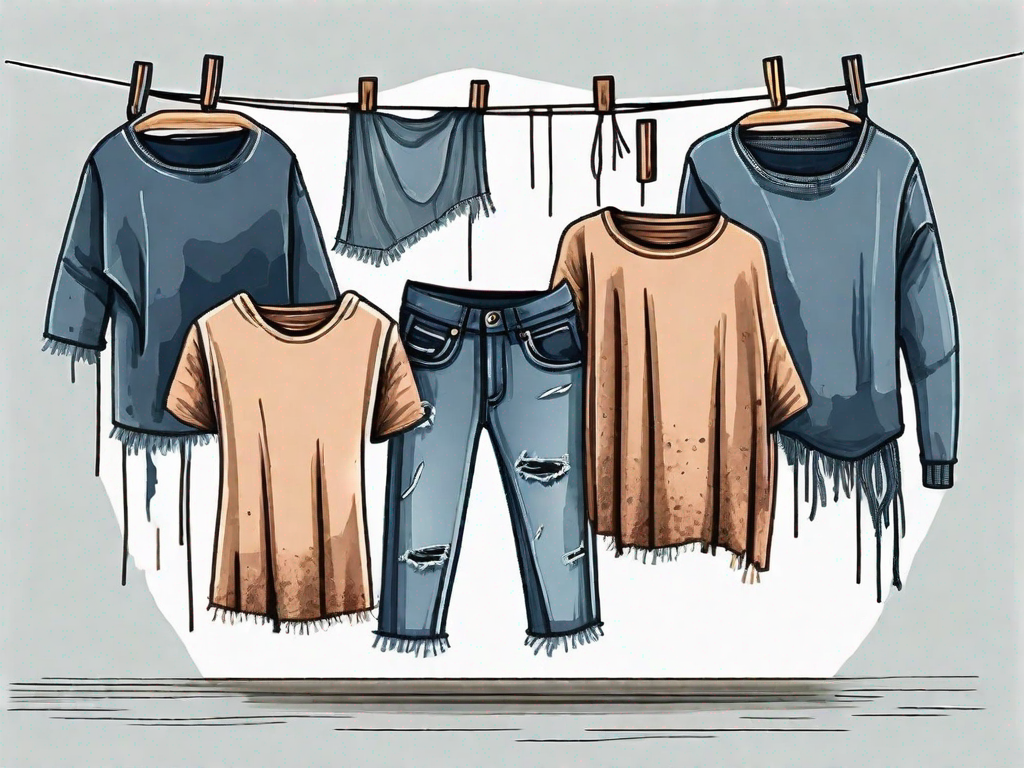
Distressed fashion might seem like throwing on your oldest, most worn-out clothes. But there’s actually more to it than meets the eye! It’s a carefully curated aesthetic that takes inspiration from pre-loved garments and imbues them with a sense of individuality and rebellion.
So, what exactly makes clothing “distressed” and how did this trend come about? Let’s go into rips, tears, and faded fabrics.
Looking “Worn Out”: Techniques of Distressed Fashion
Distressed fashion isn’t just about throwing on a pair of jeans with a hole in the knee. Here are some key techniques used to achieve that desired worn-in look:
-
Fading: This involves lightening specific areas of the fabric to mimic the natural fading that occurs over time with washing and sun exposure. Techniques used for fading include stone washing (washing clothes with pumice stones to create a worn look) and bleaching (applying bleach to targeted areas for a lighter effect).
-
Rips and tears: Distressed fashion strategically incorporates rips and tears in the fabric. These are carefully placed to add an edgy touch and can vary in size and severity, from small frays to dramatic gashes.
-
Fraying: The edges of hems, seams, and pockets are intentionally frayed to create a sense of wear and tear. This adds visual texture and a touch of rawness to the garment.
-
Acid Wash: A more advanced technique, acid washing involves treating the fabric with a diluted acid solution to create a faded and distressed effect with a unique marbled pattern.

A History of Rebellion
Distressed clothing traces back to the counterculture movements of the late 20th century, particularly punk and grunge. These subcultures embraced a DIY (do-it-yourself) approach to fashion, often taking ordinary clothes and distressing them to express their individuality and rebellion against mainstream trends.
-
Punk fashion (1970s-1980s): Punks challenged societal norms through their clothing, and distressed garments were a key part of their look. Ripped and safety-pinned clothing symbolized a rejection of conformity and a desire to make a bold statement.
-
Grunge fashion (1980s-1990s): Grunge embraced a sense of apathy and rebellion through oversized, ripped clothing. Frayed flannel shirts and ripped jeans became staples of the grunge aesthetic, reflecting a rejection of materialism and a focus on comfort over trends.
Beyond Rebellion
While distressed fashion originated as a symbol of rebellion, it has evolved over time. Today, it’s a mainstream fashion trend that can be incorporated into various styles.
-
High fashion embrace: Distressed clothing has found its way onto high-fashion runways, with designers reinterpreting the look with a touch of luxury. High-end brands might use premium fabrics with subtle distressing or create more dramatic rips and tears for a statement piece.
-
Style versatility: Distressed clothing can be dressed up or down depending on your personal style. Ripped jeans can be paired with a blazer for a casual-chic look, while a distressed leather jacket adds an edge to a feminine dress.
-
Gender fluidity: Distressed fashion transcends traditional gender norms. Ripped jeans, once seen as a more masculine style, are now a staple in both men’s and women’s wardrobes.

How to Rock Distressed Fashion with Confidence
Ready to incorporate distressed fashion into your wardrobe? Here are some tips:
-
Start subtle: If you’re new to distressed fashion, begin with pieces that have subtle distressing, like lightly faded jeans or a shirt with small frays.
-
Balance is key: Distressed clothing should be a statement piece, not the entire outfit. Pair ripped jeans with a more polished top, or balance a distressed jacket with a more tailored bottom.
-
Consider your body type: Distressed clothing can be flattering on all body types, but choosing pieces that complement your figure is important. For example, high-waisted ripped jeans can elongate your legs, while a distressed sweater can add volume to a slimmer frame.
-
Quality matters: While distressed clothing has a worn-in look, it shouldn’t look sloppy. Choose well-made garments with intentional distressing, not just clothes that are genuinely falling apart.
-
Confidence is key: The most important element of rocking distressed fashion is confidence. Own your look and wear it with pride!
Distressed fashion is more than just ripped jeans and faded t-shirts. It’s a creative process.
Check here for more fashion tips.
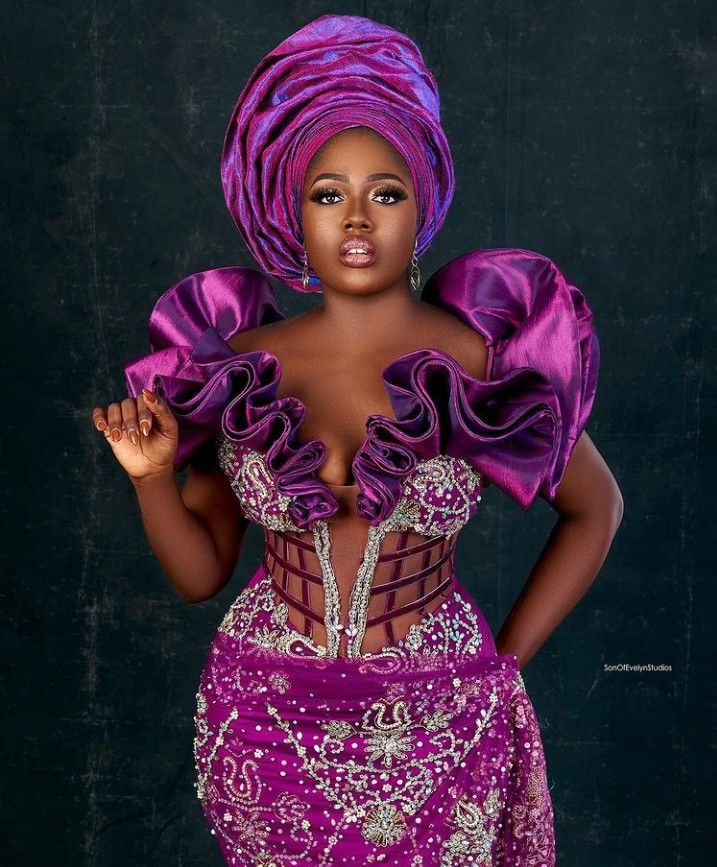
Lace is a timeless fabric that adds a touch of elegance and sophistication to any gown worn to a wedding. From classic silhouettes to modern twists, there are perfect lace gown styles to rock at a wedding.
Here’s a look at 10 of the hottest lace gown styles for the modern lady:
1. The simple corset
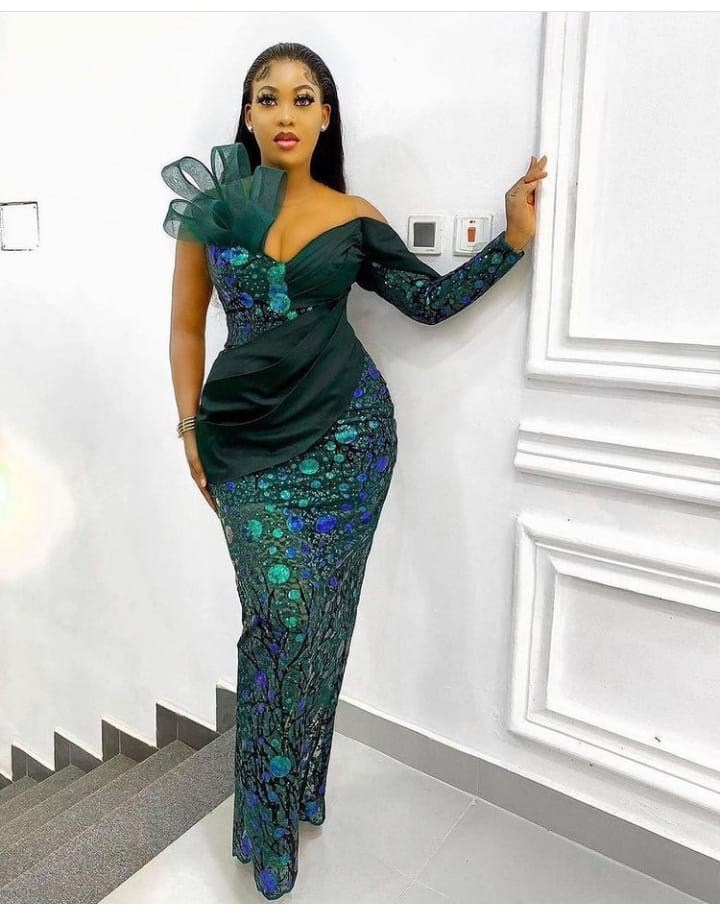
This style features a fitted bodice with a structured corset that defines the waist and creates a flattering silhouette. The lace can be delicate and floral or bolder with geometric patterns. This is a great choice for brides who want a timeless and elegant look.
2. The hidden corset

This gown offers the same figure-flattering benefits of a corset but with a more relaxed look. The corset structure is hidden beneath layers of beautiful lace, creating a smooth and seamless look. This style is perfect for ladies who want a touch of structure without feeling too constrained.
3. The draped bodice

This romantic style features a soft and flowing lace bodice that drapes beautifully over the curves. The lace can be cascading or gathered, adding a touch of whimsy and movement to the gown. This is a perfect choice for ladies who want a soft and ethereal look.
4. The constructive sleeve

Lace sleeves are a stunning way to add a touch of detail and drama to your wedding gown. Look for gowns with statement sleeves, like puffed sleeves, bell sleeves, or off-the-shoulder designs, all crafted from beautiful lace.
5. The corsetless dress with simple sleeves
This relaxed and comfortable style features a flowing silhouette without a corset. The lace adds a touch of texture and interest, while the simple sleeves keep the look clean and modern. This is perfect if you want a comfortable and effortless look at a wedding.
6. The beaded lace dress

Shimmer and shine on your wedding day with a stunning lace gown embellished with beads. The beads can be subtle and delicate or bold and dramatic, adding a touch of glamour to your look. Ladies who want a dress that truly sparkles should go for this style.
7. The high slit

Add a touch of modern sex appeal to your wedding gown with a high slit. This daring detail is perfectly balanced by the elegance of the lace fabric. If you want a show-stopping look that’s still sophisticated, go for this style.
8. The sleeveless corset
This glamorous style features a fitted bodice with a structured corset and no sleeves. The lace adds a touch of texture and interest, while the sleeveless design creates a sleek and sophisticated look. This is perfect for ladies who want a classic and timeless silhouette with a touch of modern edge.
9. The cut-out

Show a touch of skin with a strategically placed cut-out on your wedding gown. This daring detail adds a touch of modern flair to your look, while the lace keeps the overall feel elegant and sophisticated. Go for this style if you want a unique and unforgettable dress.
10. The jumpsuit

For the fashion-forward ladies, a lace jumpsuit is a bold and unconventional choice. This unique silhouette is both stylish and comfortable, perfect if you want to break away from tradition.
Remember, this is just a starting point! With so many amazing lace gowns available, the most important thing is to find a style that reflects your personal taste and makes you feel confident and beautiful. Don’t be afraid to try on different styles and silhouettes to find the perfect one for you.
For more fashion updates, check here.
Latest


New Album: KCee Releases Feat. Odumodublvck, Teni, Diamond Platnumz – ‘Mr. Versatile’
KCee has a new album called “Mr. Versatile“. This name shows that KCee is good at doing many different types...
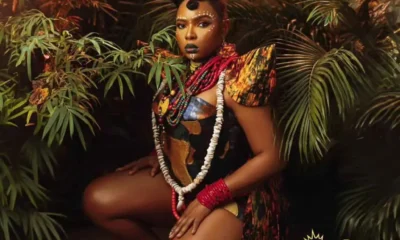

Yemi Alade Releases Her Sixth Album, ‘Rebel Queen’
Yemi Alade has just released a new album called “Rebel Queen“. She is a famous singer from Nigeria, known all...
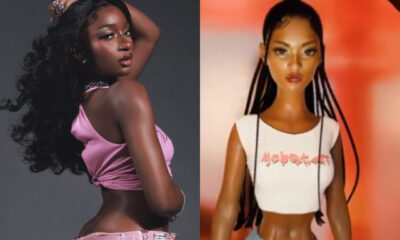

Ayra Starr Launches Doll Collection
Ayra Starr is a famous singer from Nigeria. She has become very popular in the music world. Many people like...
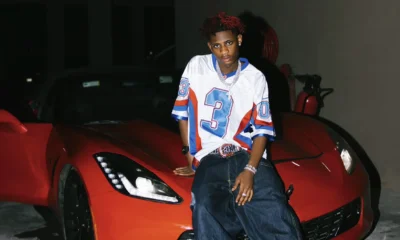

Musician Khaid Returns To Social Media After Protracted Illness; Unfollows All But Olamide
Khaid, a rising Nigerian music star, has recently returned to social media after a period of absence due to a...


Netflix Subscription Prices Increases In Nigeria For The 2nd Time This Year
Netflix has significantly increased its subscription fees for Nigerian users. This marks the second time the popular streaming platform has...
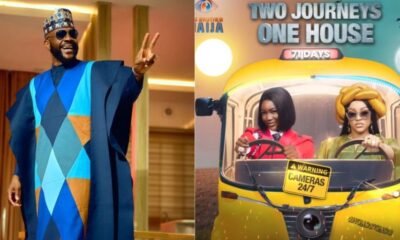

BBNaija 9: You Must Know These 4 Things Before The New Season Of Starts On Sunday
Africa’s most popular reality TV show, Big Brother Naija, is about to launch its ninth season (BBNaija 9) in a...
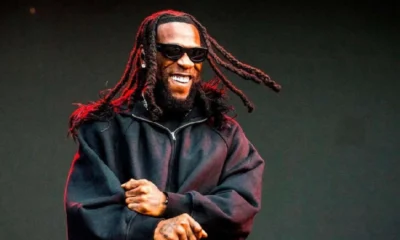

Burna Boy To Mark The 5th Anniversary Of ‘African Giant’ With YouTube Special
Burna Boy is a prominent African musician who has achieved global superstar status through his award-winning music and record-breaking concerts....


Babatunde Apalowo’s ‘Londoner’ Wins Best Fiction Feature Prize At Durban FilmMart
“Londoner” is an autobiographical film that tells the story of Ayo, a Nigerian bank manager who moves to London to...


Davido Partners With GAC Motors In Multi-Million Deal
David Adeleke, who is famously known as Davido, has entered into a new business agreement with GAC Motors, a well-known...
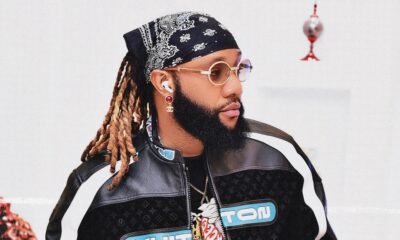

KCee Teases Release Of New Album, “Mr. Versatile”
KCee is a well-known Nigerian musician who has been making popular music for almost 20 years. He has managed to...
-Ad-




10 Reasons Why Working Out Is Good For You

New Music: BoyPee, Hyce & Brown Joel Feat. Davido – Ogechi

10 Lace Gown Styles To Steal The Show At A Wedding

Why Women Break Up With Men They Are Still In Love With

Shakira To Perform At 2024 Copa América Final On Sunday

My Wedding Dress Is The Most Comfortable Dress I’ve Ever Worn – Sharon Ooja Appreciates Designer Veekee James

Why ‘Isiagu’ Styles Are Becoming Norm At Igbo Ceremonies

Why Do Women Live Longer Than Men? See Reasons Behind The Longevity Gap

6 Ways To Stay Informed Without Sacrificing Your Mental Health

5 Things You Should Always Keep Private
Trending
-
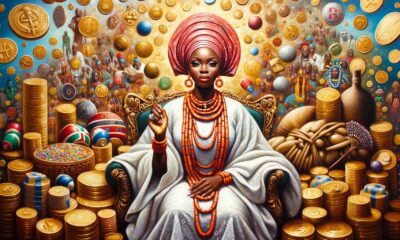
 ARTS & CULTURE6 days ago
ARTS & CULTURE6 days ago5 Powerful Goddesses Who Answer Prayers In Nigerian Traditional Religions
-
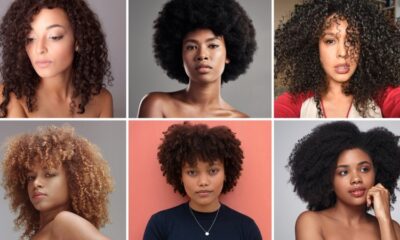
 BEAUTY5 days ago
BEAUTY5 days agoHair Care Tips For All Nigerian Hair Types
-
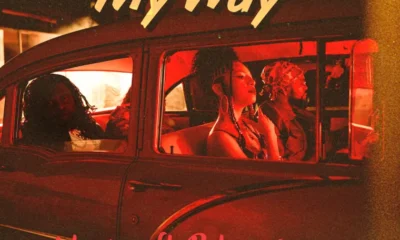
 FAB FRESH4 days ago
FAB FRESH4 days agoRising Artist Litovibes Features Patoranking In New Single, ‘My Way’
-

 FASHION7 days ago
FASHION7 days agoWhat Qualifies As Distressed Fashion?
-
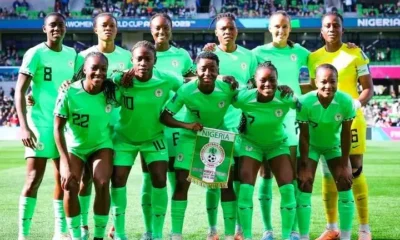
 SPORTS3 days ago
SPORTS3 days agoNigeria Vs Brazil: Time And Where To Watch The Super Falcons’ 1st 2024 Olympics Game
-

 FASHION6 days ago
FASHION6 days agoSuit Up & Stand Out: How To Wear A Head-Turning Suit In 2024
-

 HEALTHY LIVING5 days ago
HEALTHY LIVING5 days agoWhy Fibroids Come Back After Surgery
-

 OPINION6 days ago
OPINION6 days agoHow To Build Trust For A Stronger Relationship
